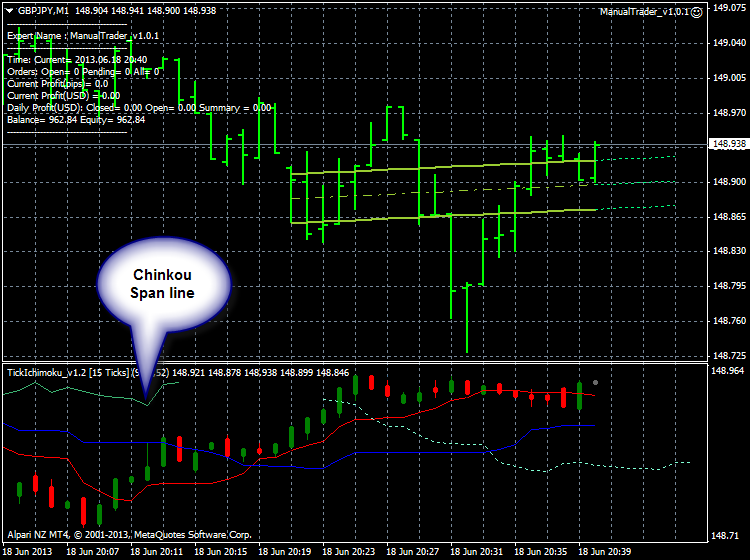As TickIchimoku_v1.2 indicator indicator was uploaded by Igorad for Premium Trading section - read here so watch this video about Ichimoku indicator in general and how to use it.
From Stocks & Commodities V. 18:10 (22-30):
Only now, in the early 21st century, are western traders really beginning to understand the power of this charting system created by one Japanese newspaper writer before the second World War.Invented before World War II by a Tokyo newspaper writer who called himself “Ichimoku Sanjin” (a pen name meaning “a glance of a mountain man”), ichimoku charts are becoming a popular tool for Japanese traders once more, not only in equities but also in currencies, bonds, indices, commodities, and options. Literally, ichimoku means “one look”; a chart of this style is referred to as ichimoku kinkou-hyou — the table of equilibrium prices at a glance.
Ichimoku’s guidebook on the charts finally appeared in 1968, long after the newspaper writer, whose real name was Goichi Hosoda, developed the technique.
Tutorial on the high probability strategy for Ichimoku :
============
I will upload some more about Ichimoku on this thread soon: articles, systems etc. More to follow.


 12Likes
12Likes LinkBack URL
LinkBack URL About LinkBacks
About LinkBacks










 Reply With Quote
Reply With Quote




Bookmarks